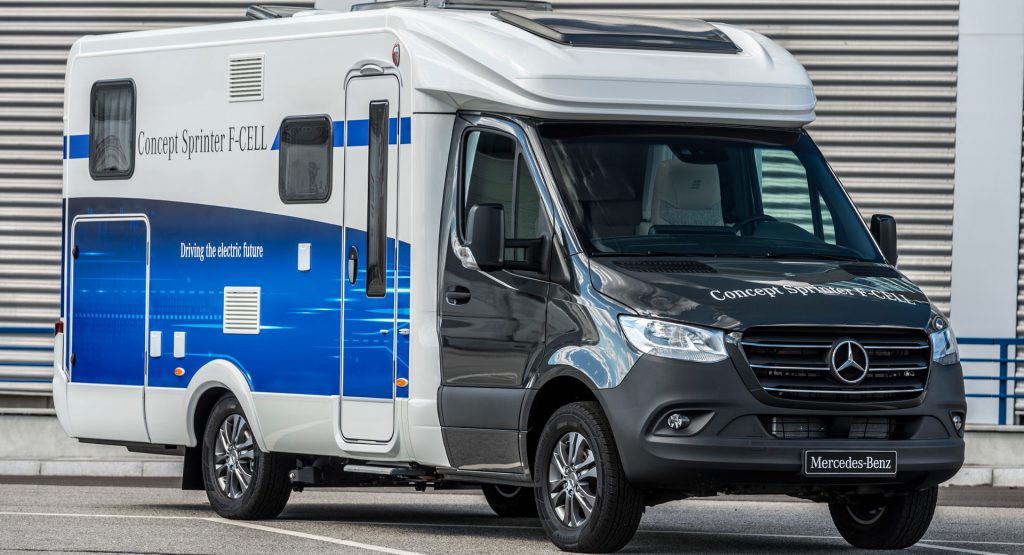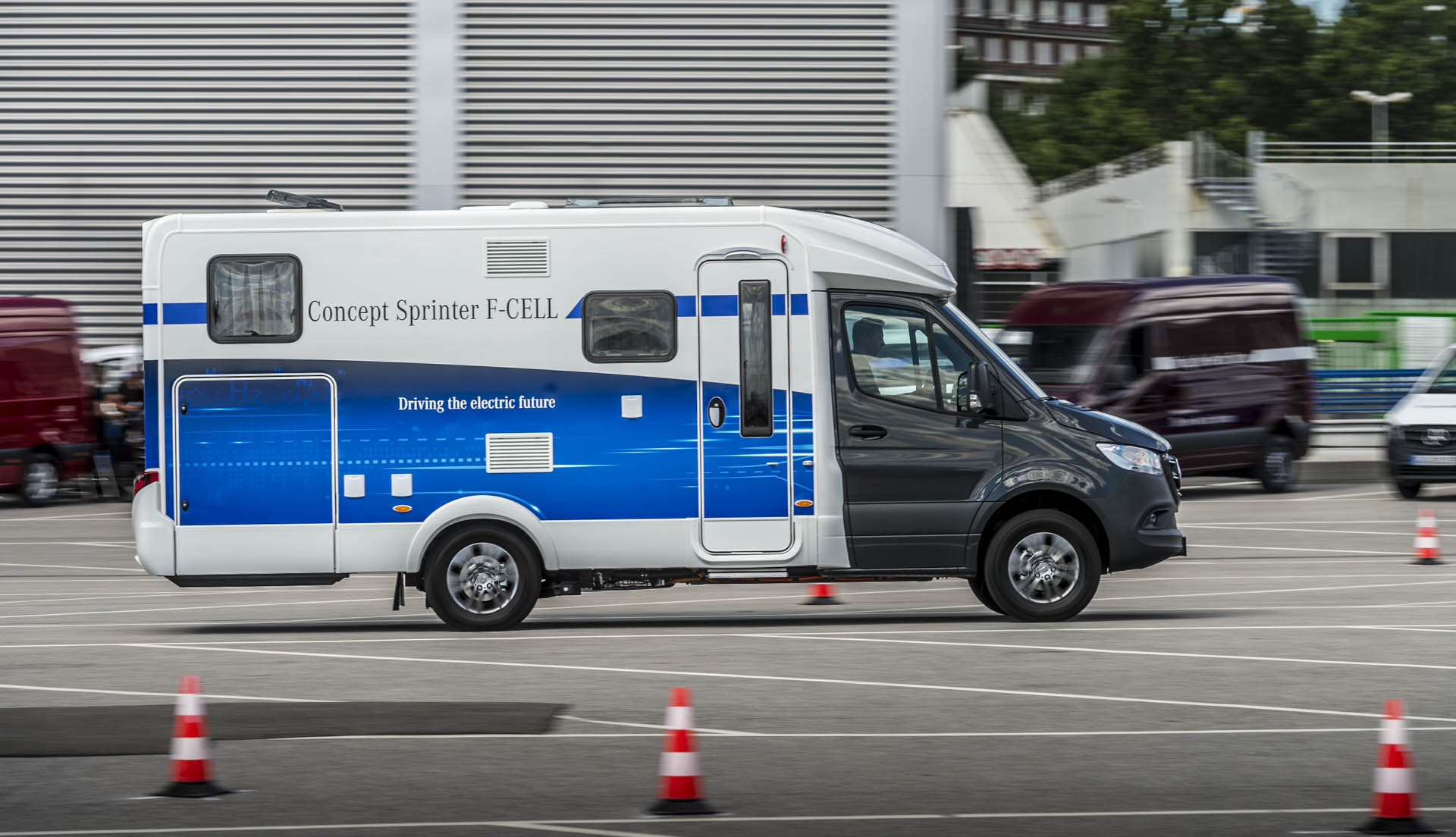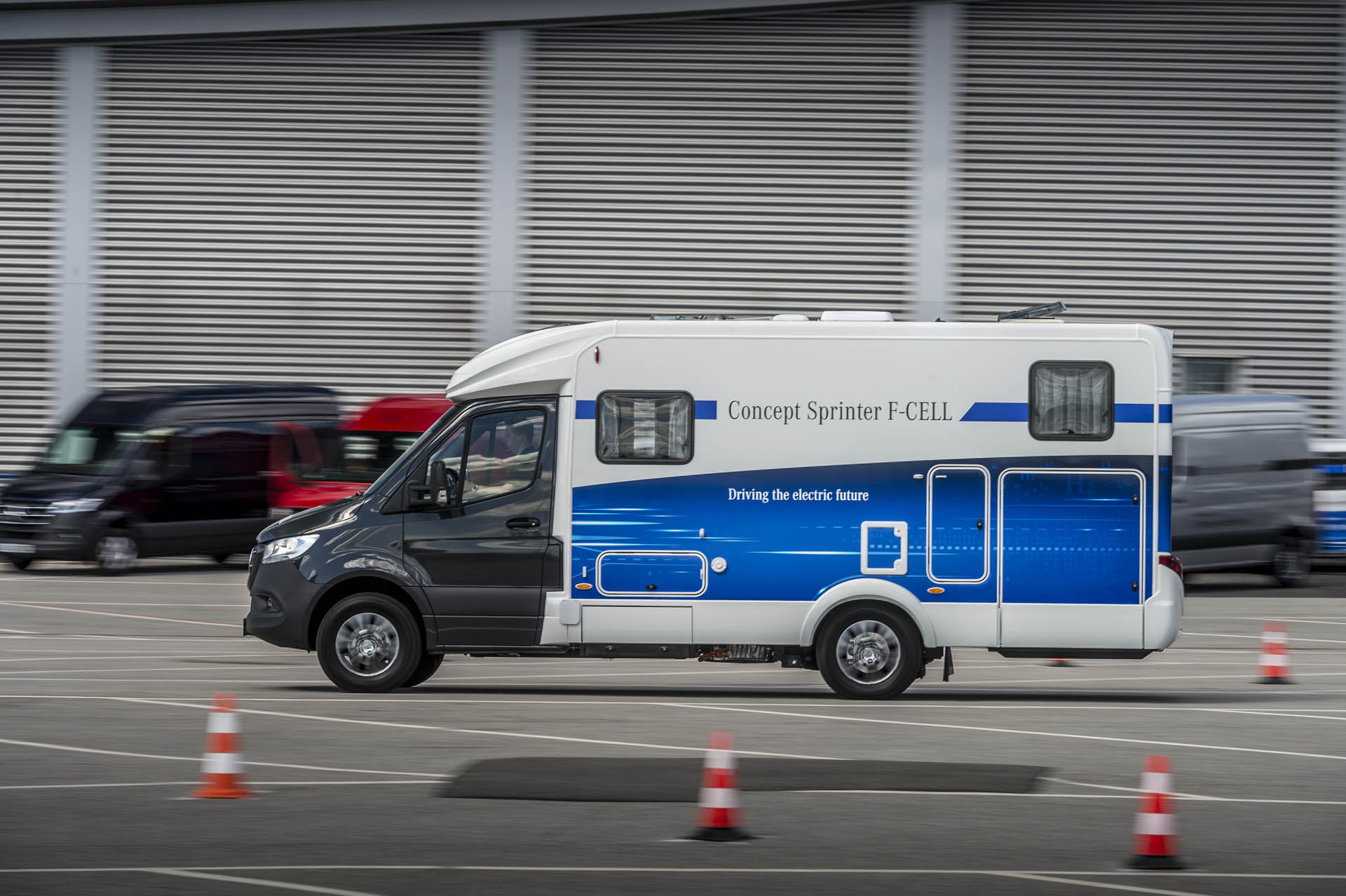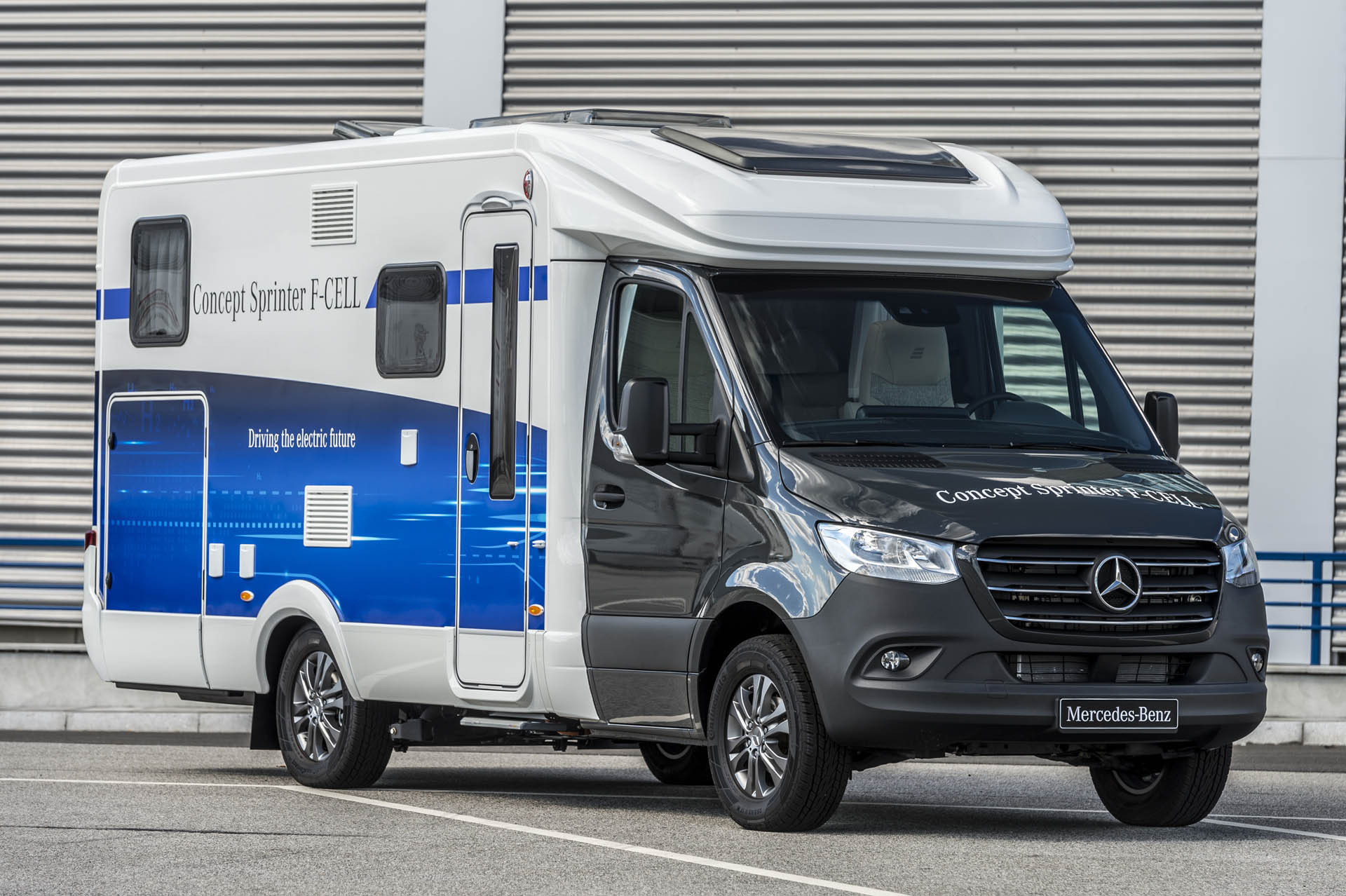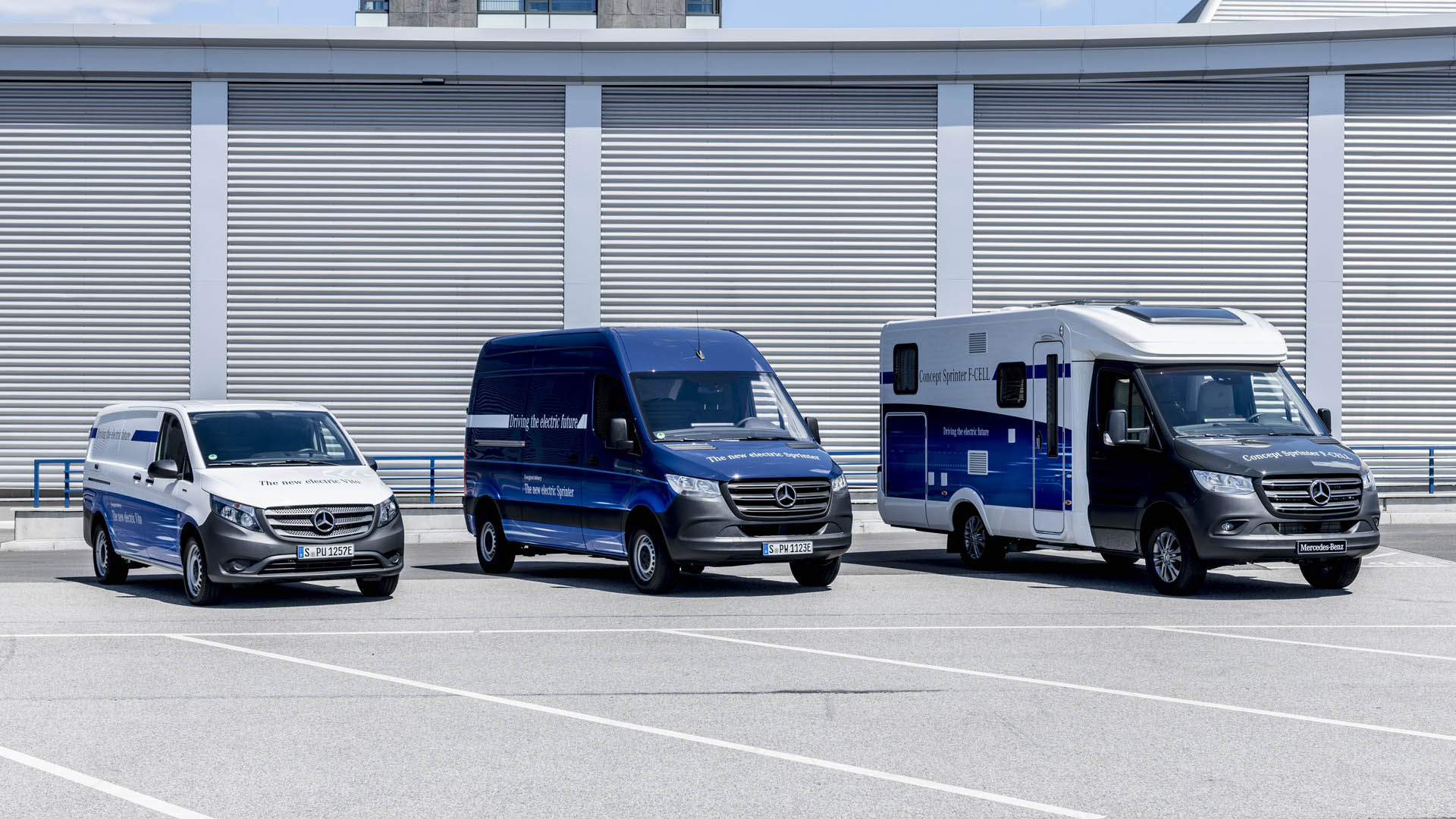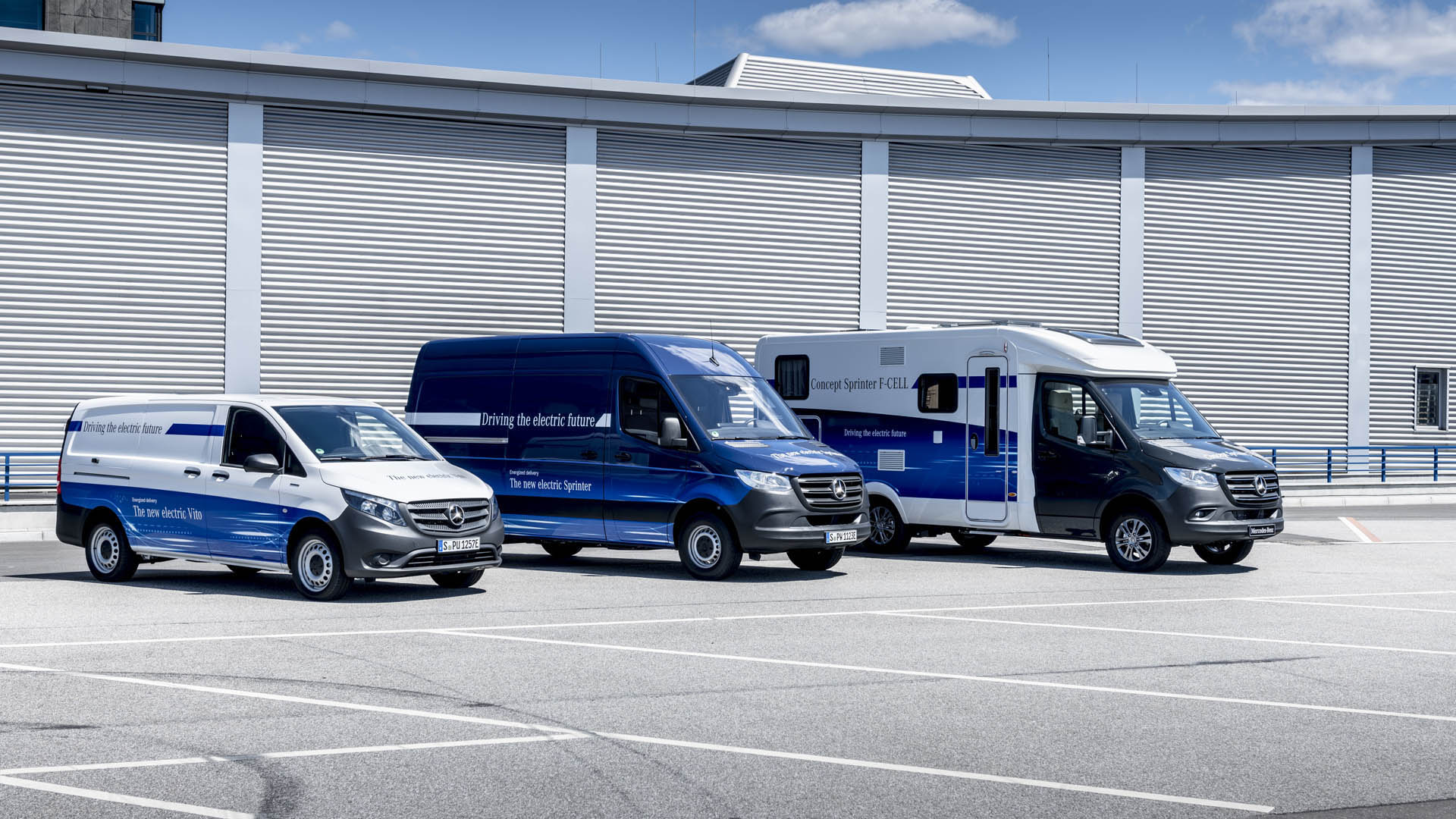With the introduction of the new third-generation model line, Mercedes is offering the Sprinter with a variety of gasoline, diesel, and even electric motors. But now it’s experimenting with another type of powertrain.
Called the Concept Sprinter F-Cell, this camper-van prototype has been converted to harness the power of hydrogen. Its electric powertrain produces 147 kW (almost 200 horsepower) and 350 Nm (258 lb-ft) of torque, backed by three fuel cells holding 4.5 kilograms (nearly 10 pounds) of hydrogen. So it can travel as far as 300 kilometers (186 miles) before having to top up.
With extra tanks placed under the body, it could go for 500 kilometers (311 miles). And it can even be charged like a conventional EV to add an extra 30 km (18.6 miles) of range – all without emitting a single gram of carbon.
“We will offer every commercial range with an electric drive – starting this year with the eVito and in 2019 with the eSprinter. With these, we will already cover many, but not all, use cases with a zero-local-emissions powertrain. For this reason, we are enhancing our eDrive@VANs strategy with fuel-cell drive, which offers substantial medium-term opportunities, especially in long-distance operation – regardless of whether a fuel-cell vehicle is used as a motorhome or in other commercial applications,” said Mercedes-Benz Vans chief Volker Mornhinweg. “The Concept Sprinter F-CELL provides an insight today into the possibilities of the future.”
Though implemented in the form of a motorhome, the powertrain concept could just as easily be applied for commercial vehicles. This isn’t the first time that Mercedes has experimented with hydrogen fuel-cell propulsion. In Frankfurt last year, it showcased the GLC F-Cell, and previously offered a similar version of the B-Class.



